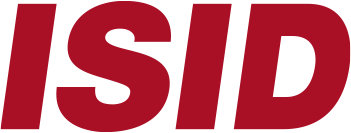What is DICOM?
Digital Imaging and Communications in Medicine (DICOM) is a standard for the digital storage and transmission of medical images and related patient information. DICOM defines the file format and its structure clearly, and includes also a communications protocol, in order to standardize TCP/IP communications between systems from different vendors around the world.
Usually, most modern medical imaging devices, like an X-Ray machine, an MRI or a CAT scanner produce DICOM images.
Some frequent questions about DICOM:
- How does DICOM work? It is is a special file format that does not only include the medical image data, but also the associated metadata, which can contain patient information, diagnostics, etc.
- Does it use compression? No. Due to the fact that all lossy compression algorithms loose some of the image information, albeit in a non-perceptible way, DICOM does not use compression, to offer the maximum information to the doctor or specialist.
- Why is DICOM also a protocol? Digital files need to be trnasmitted over a network, from one place to another. For exaple from the radiology section to the doctor’s office. In order to ensure integrity, security and standards in transmission, DICOM also includes specifications for a TCP/IP protocol.
- What is TCP/IP? TCP/IP is a set of communication protocols used in the Internet and other computer networks. It is composed by the Transmission Control Protocol (TCP), the User Datagram Protocol (UDP), and the Internet Protocol (IP). It was developed by DARPA and handles almost all traffic on the Internet.
- Does it support multiple languages? DICOM is language agnostic. As the metadata can be written in any language, the standard per se adheres to all languages and requirements. This allows for easier interaction between systems.
Our image analytics, management and storage platform Videoma Health, in its both versions: Videoma PACS and Videoma for OR, supports the this format.

Key Features:
- Metadata integration: Although there are some critics that say that DICOM can allow to many optional fields, this feature can have a positive impact, as it allows to add any information a medical professional deems necessary to be passed on to the next one.
- Multilanguage capable: As metadata is simple text information, DICOM is an international standard, because all meta fields can be in any language, or mix of languages.
- Unification: The main goal of DICOM is to produce a standard, so all medical imaging manufacturers use the same format, and the hospital software is able to interpret any image.
- Transmission Protocol: Actually, DICOM started out as a transmission protocol for medical imaging, and the DICOM file format was added later to allow for a complete standardization.
- Derivations: Some derivations of the DICOM standard exist: for example DICONDE for nondestructive testing manufacturerand DICOS, to be used for image sharing in airport security.
Products where this technology applies to
Our product range is multi-sectoral and covers the entire lifecycle of digital information,
from its generation to its targeted reuse.
Videomed PACS for OR recording
Centralize all your medical video in one place and record all your surgeries for training, research or legal backup



Would you like to know moreabout the ISID Partner Program?
Become an ISID Reseller or Integrator joining our Partner Program today.















